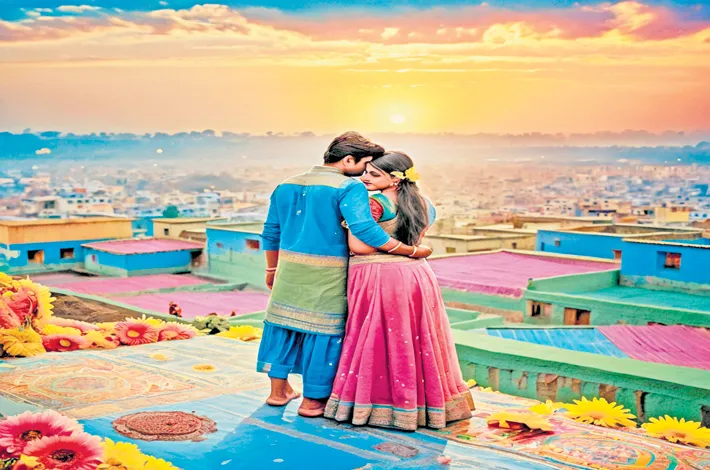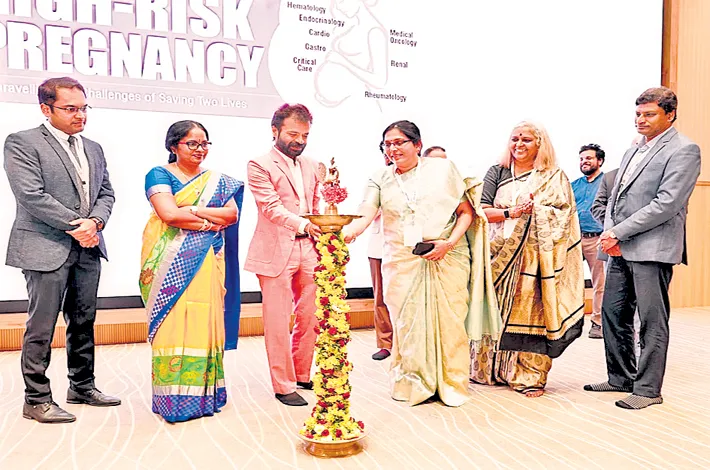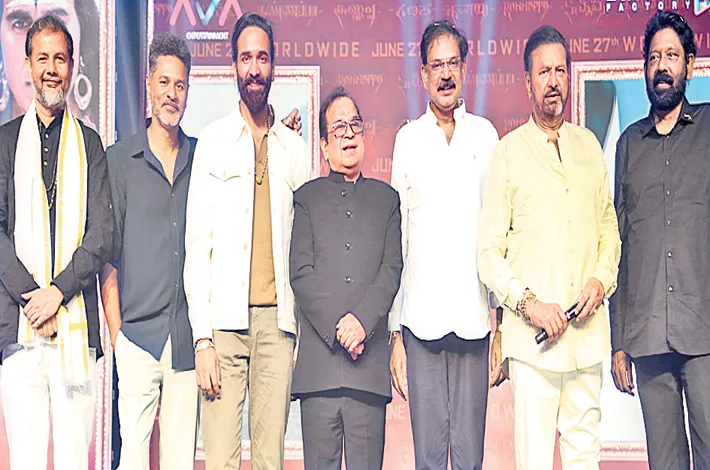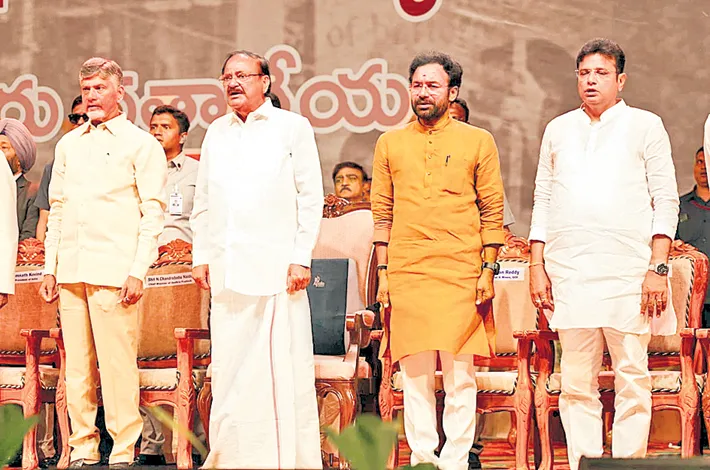Solapur’s Sunset Serenade
06-06-2025 12:00:00 AM

In the heart of Solapur, where the Siddheshwar Temple’s spire pierced the sky and the scent of roasted jowar lingered in the air, Aarti stood at the edge of Bhuikot Fort, gazing at the horizon. The sun dipped low, painting the sky in hues of saffron and rose, mirroring the vibrant chadar she wore, a traditional Solapur weave her mother had gifted her.
At twenty-five, Aarti was a weaver’s daughter, her fingers skilled at crafting the intricate Solapur chadars sold in the bustling markets of Akkalkot Road. But her heart, restless and untamed, yearned for something beyond the loom’s rhythmic clack.
It was here, on a balmy evening in June 2025, that she first saw him—Rohan, a photographer from Mumbai, his camera slung around his neck, capturing the fort’s weathered stones against the sunset’s glow. His eyes, sharp yet kind, caught hers as he adjusted his lens. “Mind if I take a shot?” he asked, gesturing to the view behind her. Aarti, usually shy, nodded, her cheeks warming under his gaze.
“Solapur’s light is something else,” Rohan said, clicking away. “It’s like the sun knows this city’s stories.” Aarti smiled, intrigued by his poetic take. “What stories do you see?” she asked, stepping closer. He lowered his camera, his grin boyish. “Yours, maybe.”
That fleeting moment sparked something. Over the next week, Rohan lingered in Solapur, his assignment to document Maharashtra’s textile heritage keeping him close to Aarti’s world. She became his unofficial guide, leading him through the chaotic charm of Solapur’s markets, where vendors hawked everything from spicy misal to handwoven shawls. They wandered past the Great Indian Bustard Sanctuary, where Aarti teased him about his city-bred fear of open spaces, and shared chai at a roadside stall near Hipparga Lake, their laughter mingling with the clink of glasses.
Rohan was unlike anyone Aarti had known. He spoke of Mumbai’s frenetic energy, of chasing dreams through crowded streets, but listened intently when she described her life—her father’s pride in their weaving legacy, her secret sketches of patterns she dreamed of creating. “You’re an artist,” he told her one evening as they sat on the fort’s ramparts, the city twinkling below. “These chadars… they’re your canvas.” His words lit a spark in her, a belief she hadn’t dared nurture.
Yet, love in Solapur wasn’t simple. Aarti’s family expected her to marry soon, preferably to someone rooted in their traditions, not a city boy with a camera and wanderlust. Her brother, Sanjay, had already begun whispering about “suitable matches” from nearby villages. Aarti felt the weight of expectation, like the heavy warp threads on her loom, pulling her toward a life she wasn’t sure she wanted.
One evening, as they strolled through the Siddheshwar Temple’s courtyard, the air thick with incense and devotion, Aarti confessed her fears. “I want more than this,” she said, her voice barely above a whisper. “But leaving Solapur, my family… it feels impossible.” Rohan took her hand, his touch gentle but firm. “You don’t have to leave to be more,” he said. “You can weave your dreams right here. And if you ever want to chase them elsewhere, I’ll be there.”
His words were a promise, but doubt gnawed at her. Could a love born in Solapur’s fleeting sunsets survive the pull of their different worlds? Rohan, sensing her hesitation, showed her his photographs—images of her laughing by the lake, her hands deftly working the loom, her eyes alight with dreams. “This is how I see you,” he said. “Not bound, but boundless.”
The turning point came during Solapur’s annual Handloom Fair, a riot of color and commerce where Aarti’s family stall drew crowds. Rohan, ever the photographer, captured her weaving a chadar under the fair’s bright lights, her focus unwavering. Later, as they shared jowar bhakri under a banyan tree, he showed her a photo he’d taken—a close-up of her hands, calloused yet graceful, threading a pattern that seemed to dance. “This could be your future,” he said. “Your designs, in galleries, in stores, anywhere you want.”
Aarti’s heart raced. She’d always seen her weaving as duty, not destiny. But Rohan’s belief in her, his vision of a world where her art could soar, cracked open her fears. That night, as the fair’s lights dimmed and Solapur slept, she kissed him under the fort’s shadow, the stars above bearing witness. It was a quiet vow, not just to him, but to herself—to chase the life she wanted.
Days later, Rohan’s assignment ended, and Mumbai called him back. At the Solapur railway station, amid the chaos of porters and honking autos, Aarti stood before him, her chadar fluttering in the breeze. “I’m not saying goodbye,” he said, his voice steady. “I’ll come back, or you’ll come to me. We’ll figure it out.” She nodded, tears prickling her eyes, but her smile was resolute. “I’m going to start my own designs,” she said. “And maybe… I’ll visit Mumbai.”
As his train pulled away, Aarti felt the weight of Solapur’s traditions and her own dreams collide, not in conflict, but in harmony. She returned to her loom, her fingers weaving a new pattern—one inspired by the sunset’s glow, Rohan’s laughter, and her own unyielding spirit. Solapur, with its dusty streets and vibrant soul, wasn’t a cage but a canvas. And Aarti, now both weaver and dreamer, was ready to paint it with her story.
Months later, a package arrived from Mumbai—a photograph of Aarti, framed, with a note: “For the artist who weaves Solapur’s heart. I’m waiting.” She smiled, her latest chadar—a riot of sunset colors—draped over her shoulder, ready for the world.








